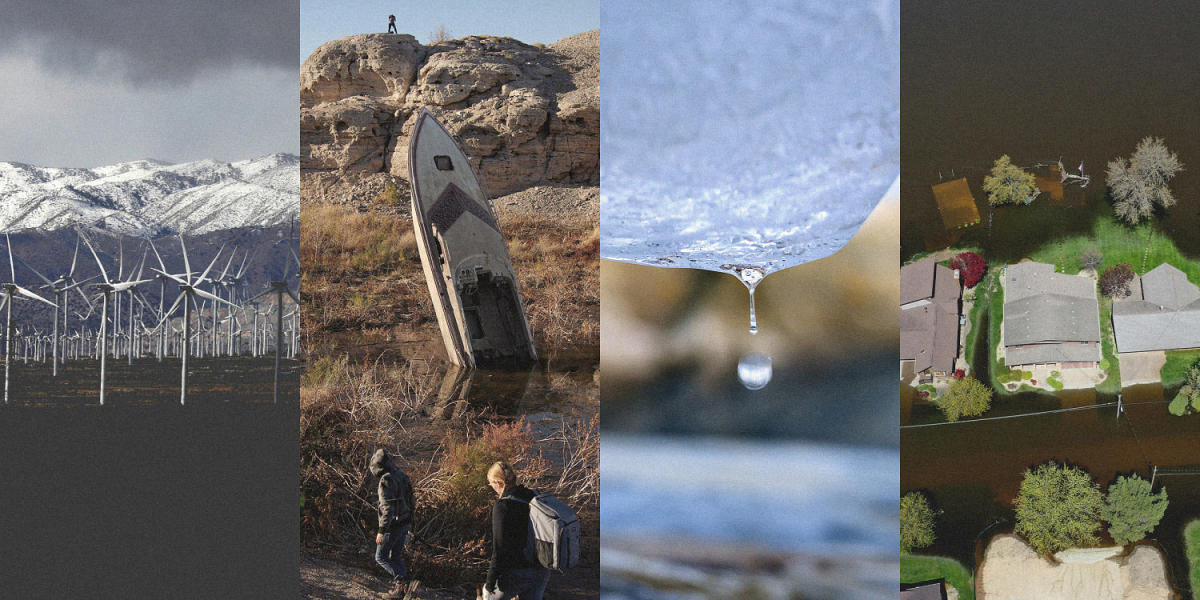The water cycle that shuttles Earth’s most vital resource around in an unending, life-giving loop is in trouble. Climate change has disrupted that cycle’s delicate balance, upsetting how water circulates between the ground, oceans and atmosphere.
The events of 2023 show how significant these disruptions have become. From extreme precipitation and flooding to drought and contaminated water supplies, almost every part of the U.S. faced some consequence of climate change and the shifting availability of water.
The water cycle controls every aspect of Earth’s climate system, which means that as the climate changes, so too does nearly every step of water’s movement on the planet. In some places, the availability of water is becoming increasingly scarce, while in others, climate change is intensifying rainfall, floods and other extreme weather events.
As the planet continues to warm, this cycle is expected to be increasingly stretched, warped and broken.
The water cycle — a staple of elementary school science classes — describes the constant movement of water in all its phases (solid, liquid and gas) on the ground, inside the ground and up in the air. Powered by the sun and fueled by changes in temperature, the water cycle forms the invisible link between Earth’s glaciers, snowpack, oceans, lakes, rivers, plants, trees, clouds and rain.
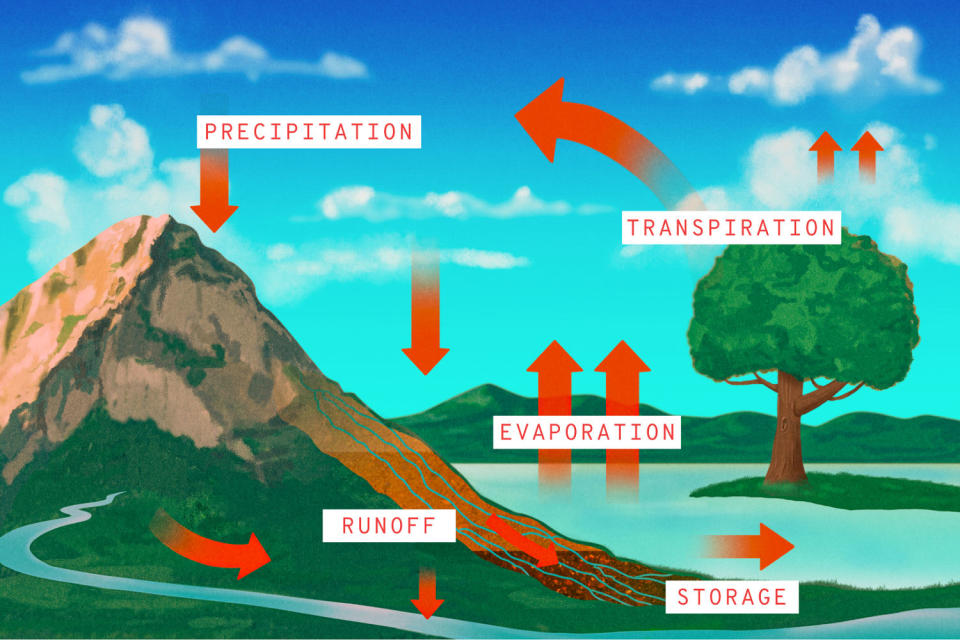
Liquid water flows across the land as runoff, with a portion seeping deep underground, where it’s stored as groundwater. Some water will flow into streams, rivers and other bodies of water. And in some parts of the world, water is also stored in its frozen form, as is the case with glaciers or snowpack. Water on the ground or in bodies of water turns back into water vapor through a process known as evaporation. Some water is also taken up by plants before evaporating into the atmosphere, a process known as transpiration.
Water vapor eventually condenses into clouds. Precipitation falls in the form of rain or snow, transporting water from the atmosphere back over land and starting the cycle over again.
Human activities have an enormous influence over the water cycle because water is needed for drinking, agriculture, industrial activities, electricity and more. Each of these uses affects the availability and supply of water, but climate change can add additional stress on the movement of water between land, the oceans and the atmosphere.
Below, we walk through these crucial steps — precipitation, evaporation, transpiration, runoff and storage — to illustrate how climate change is already changing our environment in ways that are affecting millions of people across the U.S.
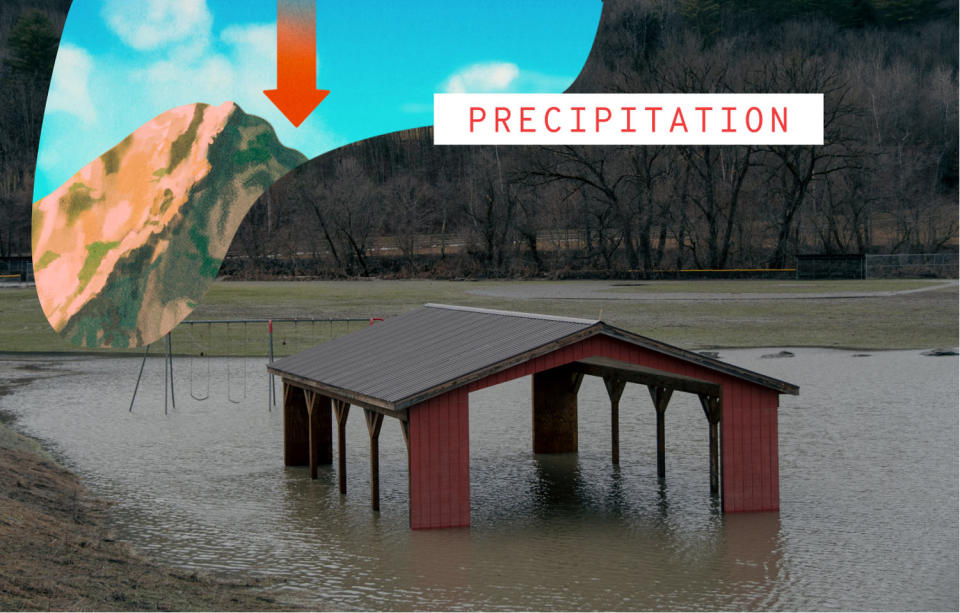

In 2023, extreme precipitation, likely supercharged by climate change, hammered nearly every corner of the United States.
For every degree of warming in Fahrenheit, the atmosphere can hold about 3%-4% more moisture. Global temperatures in 2023 were 2.43 degrees higher than they were in preindustrial times, meaning today’s storms can deliver a stronger punch.
In Vermont, intense rainfall in July caused flash flooding that nearly breached a dam in Montpelier and left the streets flooded. In September, New York City saw a similar story play out, as 7 inches of rain fell in 24 hours in some locations, submerging cars and city buses and shuttering rail travel.
The consequences of storms are intensified in cities like New York, where storm drains and subway tunnels are in disrepair or were simply built for a more gentle climate.
Climate change is also changing the behavior of hurricanes to produce more extreme rainfall. Hurricanes today are more likely to intensify rapidly, meaning they quickly pick up wind speed because they feed on warming waters near the shore. And when these storms make landfall, climate change is increasing the probability that hurricanes will stall and dump incredible amounts of rain as they plod across the landscape.
When Hurricane Idalia approached the Florida shoreline in late August, its wind speeds rose by 55 mph in just 24 hours and it strengthened from a Category 1 to a Category 4 storm. The storm dropped more than 13 inches of rain on Holly Hill, South Carolina, which was the location hit hardest by rainfall.
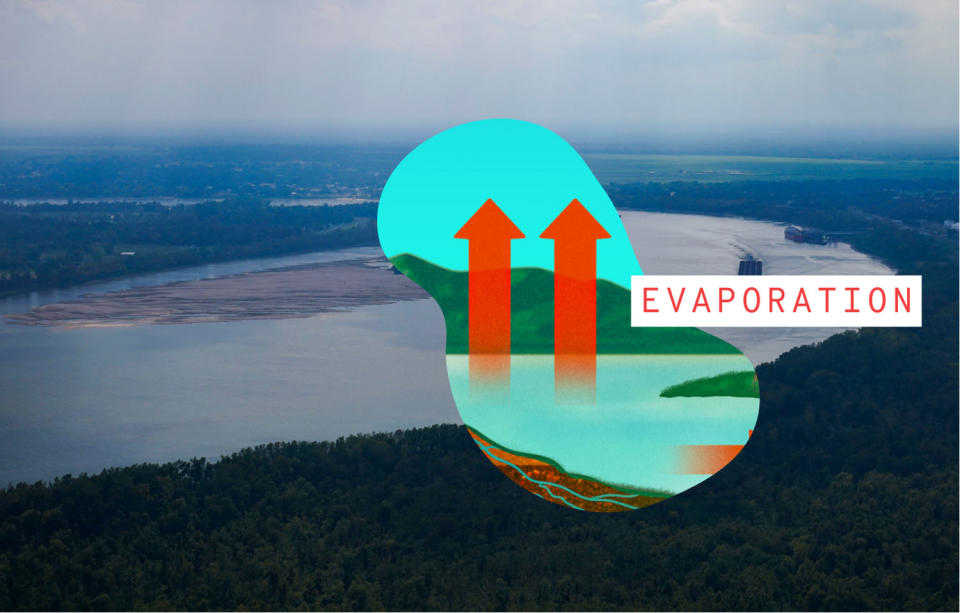

Hotter temperatures are increasing evaporation and transpiration in some areas, making drought more likely and stressing plants, which was evident during a summer of extreme heat in 2023.
Climate change makes droughts more frequent, more severe and longer-lasting.
Persistent drought dropped water levels in the Mississippi River to historic lows in 2023, which allowed saltwater from the Gulf of Mexico to push upstream and contaminate urban drinking water supplies.
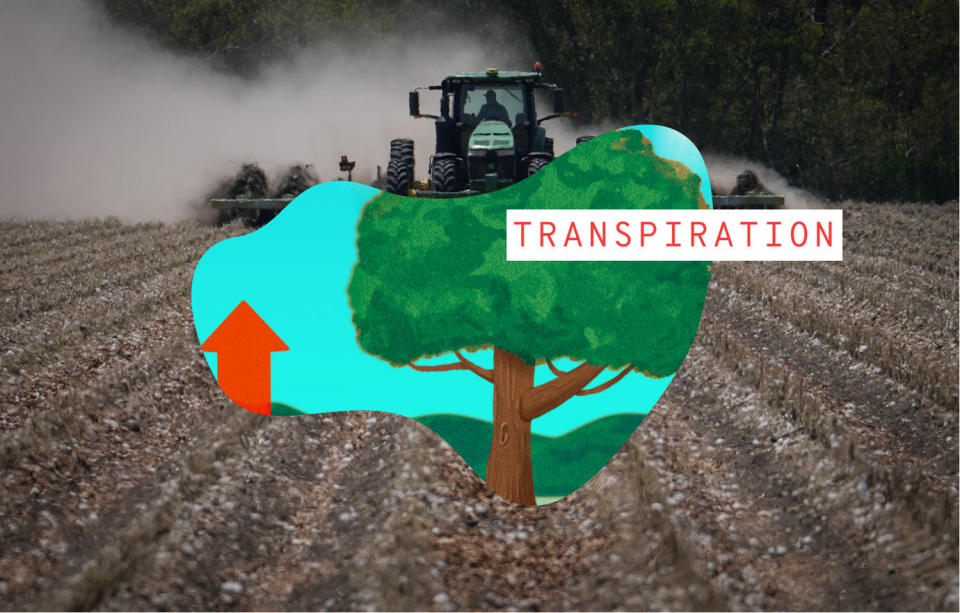

Meanwhile, drought in Hawaii exacerbated wildfire risk by drying out vegetation and making the nonnative grasses on Maui a “ticking time bomb,” in the words of one researcher. A catastrophic wildfire, whipped up by hurricane-strength winds, tore through the historic town of Lahaina in August 2023, killing 101 people.
In the Midwest and South, drought hung over the region from spring to fall, making it the most costly natural disaster in 2023 — at $14.5 billion.
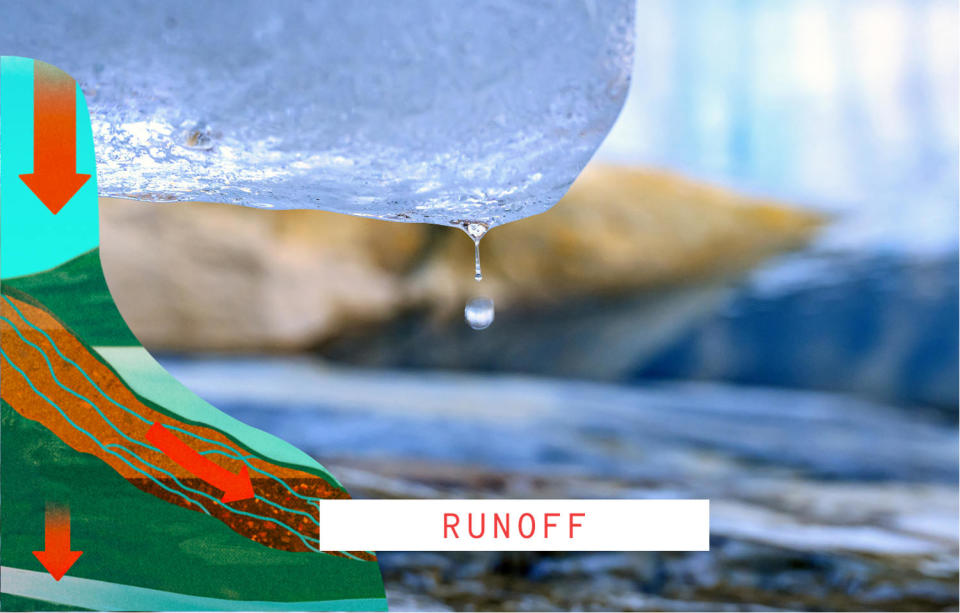

Climate change is shifting the pattern and timing of runoff, particularly in mountainous parts of the U.S., which can cause rivers to run at extreme highs — and lows.
In Alaska, where temperatures have warmed about twice the rate of the global average, a dam of glacial ice burst, allowing a massive pulse of floodwater to flow downstream, where it ripped out trees and flooded neighborhoods near Juneau.
The event would not have happened if not for climate change and glacial retreat, according to the National Oceanic and Atmospheric Administration.
Warm spring and summer temperatures in the Pacific Northwest hastened that region’s melt-out, leaving the water supply short in fall and straining the region’s capacity to generate hydropower.
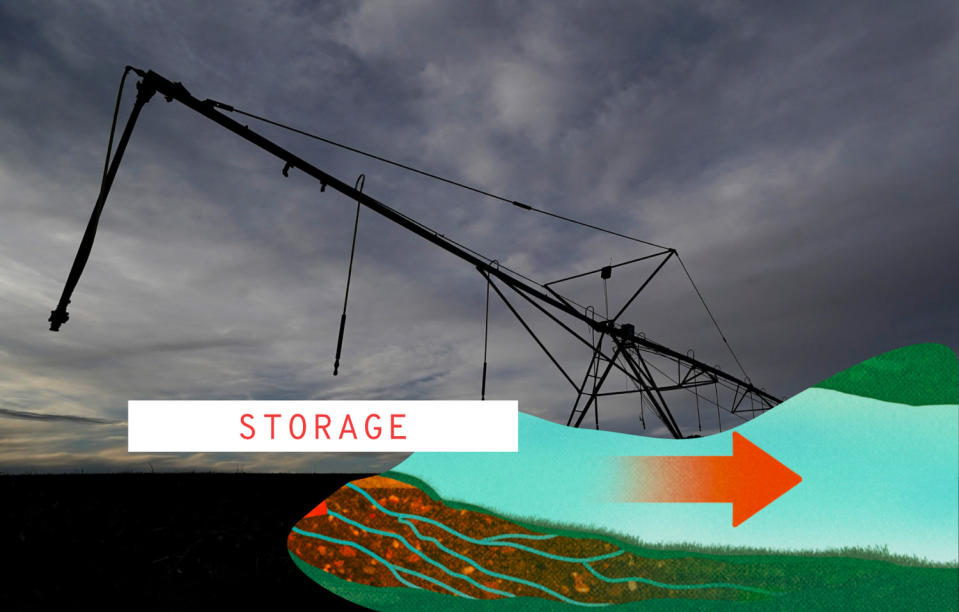

Water supply is dwindling in Western states, on the Great Plains and in some parts of the Midwest.
Years of overuse — in part because of rising temperatures and drought — are leading farmers to consume unsustainable amounts of stored groundwater and pushing some aquifers to the brink.
California was hammered with extreme rainfall in 2023, as more than a dozen atmospheric-river storms battered the state. The storms, likely intensified by climate change, relieved a drought and blanketed the state in 2 to 3 times as much snow as usual.
But all that precipitation made only a dent in the state’s overall groundwater deficit after seasons of drought, and groundwater levels remained lower than they were after a previous, four-year drought ended in 2016, according to the California Department of Water Resources.
Last year, several states reached an agreement over cuts to their use of the Colorado River, where reservoirs were holding just 43% of what they could store at year’s end, even after a heavy snow year.
This article was originally published on NBCNews.com

Amanda Smith is a dedicated U.S. correspondent with a passion for uncovering the stories that shape the nation. With a background in political science, she provides in-depth analysis and insightful commentary on domestic affairs, ensuring readers are well-informed about the latest developments across the United States.

